Are you planning to travel to Australia to learn more about Aboriginal culture? The Northern Territory is the place for you. Find out about 3 places in the NT where you can explore locations that have a deep meaning for Indigenous Australians.
There are few places in Australia as magical as the Red Centre, the outback region in the central Northern Territory surrounding the town of Alice Springs.
At first glance, it may look like there’s little to see – after all, towns are few and far between, and the territory is covered by desert, deep ochre sand, with weathered trees and bushes scattered around. Look closely, and you’ll see the Red Centre is surprisingly diverse. There are gorges, waterholes, mountain ranges, ephemeral rivers – and most importantly, the land is rich in sacred Aboriginal sites.
Visit the Red Centre by yourself, and you’ll see a (truly stunning) desert. Visit with an Aboriginal guide, and you’ll understand that the land itself conceals a thousand stories – every tree, every rock, every billabong (waterhole) are living cultural landscapes, part of historic and creation story narratives that span millennia, passed on orally from generation to generation.
Aboriginal Australians have inhabited the Red Centre for over 60,000 years. It’s important to know that there’s no single Aboriginal Australian culture – before the European Invasion in 1788, there were hundreds of Indigenous nations within Australia, each divided further into groups.
This article aims to provide a practical guide for visitors to three places in the Northern Territory – Uluru, Kata Tjuta, and Watarrka National Park.
We would like to honour the traditional owners and custodians of these lands – the Anangu people in Uluru and Kata Tjuta, and the Luritja people in Watarrka.

My Guide to 3 NT destinations to Learn About Aboriginal Culture
Uluru
Let’s start with Uluru, the most iconic destination in the Red Centre, which holds a place of great importance in Anangu culture. Uluru is the largest sandstone inselberg (isolated mountain) in the Australian Outback, standing 348 meters high and with a circumference around the base of approximately 9.4 km (5.8 miles).
After the European Invasion, Uluru was named Ayers Rock, and was soon developed as a tourism destination – without taking its sacred status into account. Until October 2019, tourists were even allowed to climb this sacred rock, even though Anangu people asked people not to for several years.
The Australian government returned ownership of Uluru back to the Anangu people in 1985, with the proviso that it would be jointly managed for 99 years.

For Anangu people, Uluru is culturally significant on many levels. It’s believed to have originated during the Dreaming, the time when Australia was barren and featureless. Giant ancestral spirits roamed the land, creating life and geological features which can be seen to this day.
Different sections of Uluru were created by different ancestral beings – the Mala, hare-wallaby people, created the north-western side, while the south-west was the work of Lungkata, the blue-tongued lizard.
Many more Uluru-related Dreamtime stories should only be learned in person, and pictures of the sacred sites they relate to should not be disclosed.
Uluru is sacred to the Anangu people, who hold a variety of ceremonies and rites of passage in the caves and gorges at the base of the mountain. Some of these are just for men’s business, some are just for women’s business – and not to be disclosed outside the community.
The best way to discover Uluru respectfully while learning about its importance in Anangu culture is going on a walk with an Aboriginal guide. The Mala walk is the easiest to arrange – free ranger-led tours are available every day, and the trail is only 2 km long and suitable for all fitness levels.
For a more in-depth exploration, opt for the Lungkata Walk or the North-East Face Walk, passing a multitude of sacred sites. If you are a photographer, please read this article on photographing Uluru, or ask your guide before taking photographs of specific locations. Wide shots of Uluru from far away are allowed at sunset, as the naturally-occurring shadows conceal sacred sites.

Want to know more about travelling Australia responsibly? Here’s our guide to 6 Ethical Animal Activities around Australia!
Kata Tjuta
Together with Uluru, Kata Tjuta is the main point of interest within Uluru-Kata Tjuta National Park. Kata Tjuta is a group of large rock formations including 36 domes – the word Kata Tjuta means ‘many heads’ in Anangu, in reference to their shape.
Kata Tjuta is also referred to as The Olgas, in reference to Mount Olga, the highest of its peaks. Mount Olga was named after Queen Olga of Wurttemberg in 1872 in a common act of erasure of traditional Aboriginal names, but thankfully the name Kata Tjuta was reinstated in 1993.
Similarly to Uluru, Kata Tjuta is sacred and hugely significant for Anangu people. The site is particularly important for men’s business, but the exact location of what goes on during these rites is not disclosed with outsiders. The majority of Dreamtime stories are also not disclosed, or only shared on location.
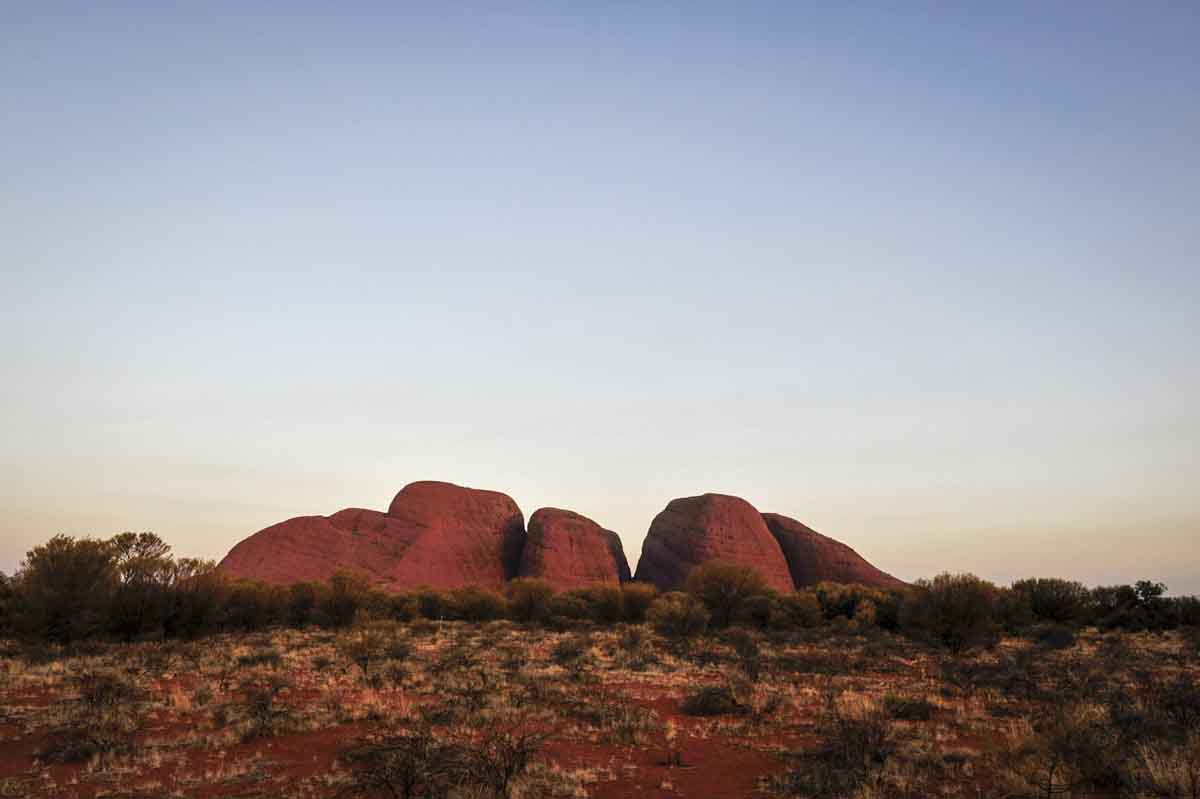
Among the stories that can be shared, the best known is that of snake king Wanambi, who lives on the summit of Kata Tjuta. During the wet season he stays curled up on the summit, but during the dry season he descends slithering around the rock formations, and his breath can be felt as the wind blowing through the gorges.
We recommend joining a tour with an Aboriginal guide or ranger to explore Kata Tjuta meaningfully. There are two main trails to cover – Walpa Gorge, a 2.6 km (1.6 miles) hike along the canyon between two of the domes, and the Valley of the Winds, a much longer loop measuring 7.4 km (4.6 miles), traversing two spectacular lookouts.
Both walks encounter sacred men’s sites, so please refrain from photographing any of the rock formations up close. Close-up shots of plants or animals are fine – always double-check with your guide if you’re unsure.
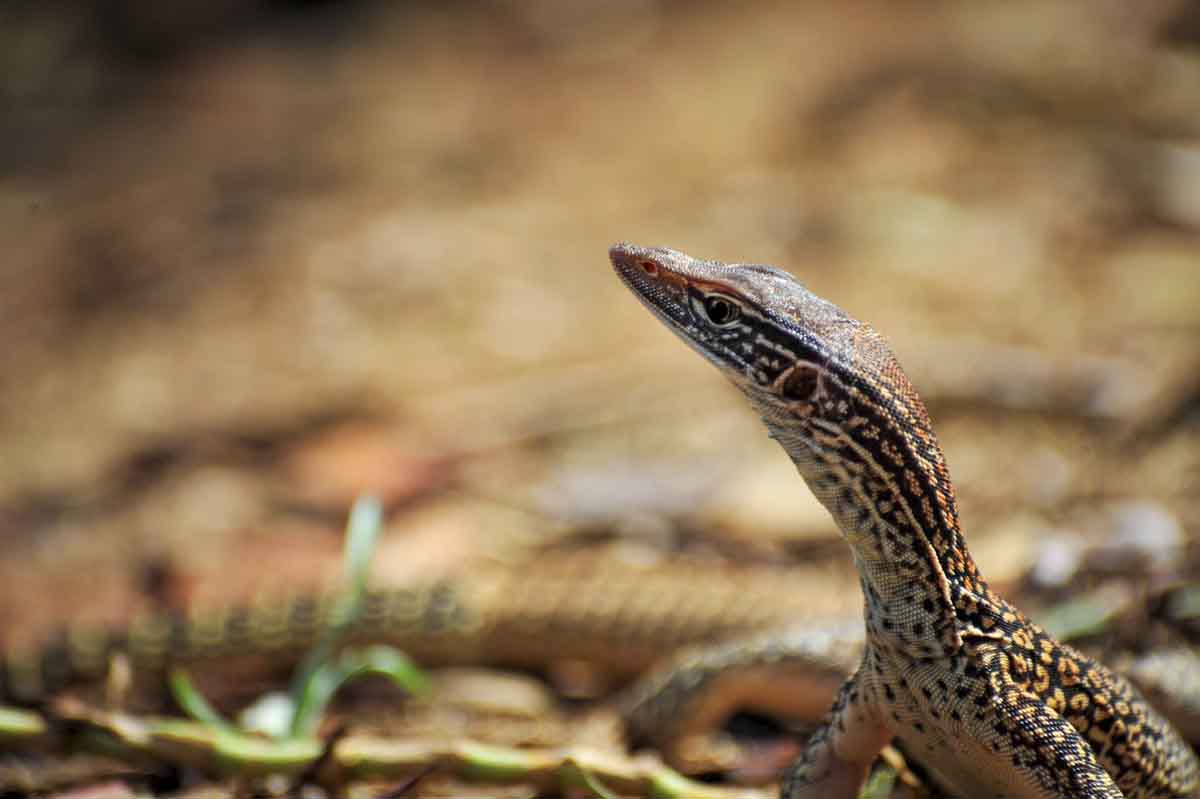
How to Get to Uluru/Kata Tjuta
The best way to get to Uluru/Kata Tjuta is flying to Ayers Rock airport near Yulara, the closest town to the national park. Flights are available from several airports all over Australia.
You’ll need a car to visit the area, as places are very spread out – Uluru and Kata Tjuta are 35 km from one another. If you are planning to rent a car at Ayers Rock airport, make sure you reserve in advance as not many vehicles are available.
Many people opt to visit Uluru/Kata Tjuta as part of a larger road trip around the Northern Territory and other parts of Australia. Alice Springs is 465 km from Uluru, and driving there takes at least 5/6 hours. Watarrka National Park is located along the way, and it’s another place to learn more about Aboriginal culture!

Where to Stay at Uluru/Kata Tjuta
There are no places to stay in the Uluru/Kata Tjuta National Park, and camping within park boundaries is not allowed. The closest place to stay is Ayers Rock Resort, offering accommodations for all tastes and pockets.
Here is a quick rundown of the accommodation options within the resort – all of them include shuttle to and from the airport and within the resort:
- Longitude 131° – luxury desert lodge with uninterrupted views over both Uluru and Kata Tjuta
- Sails in the Desert – value luxury accommodation with a swimming pool, spa, and Indigenous art gallery
- Desert Gardens Hotel – midrange hotel offering poolside rooms with views over Uluru
- Emu Walk Apartments – serviced apartments ideal for a self-catering stay
- The Lost Camel Hotel – an edgy boutique hotel
- Ayers Rock Campground – the most affordable option, with cabins, shaded tent sites, swimming pool, and shuttle bus within the resort
Where to Eat at Uluru/Kata Tjuta
There is a wide variety of dining options all over the Ayers Rock Resort, ranging from the exclusive Tali Wiru outdoor dining experience featuring native ingredients and Aboriginal cooking methods, to the cheap and cheerful DIY Aussie barbecue at Pioneer BBQ.
Have a look at this website for all dining options and experiences at Ayers Rock Resort.
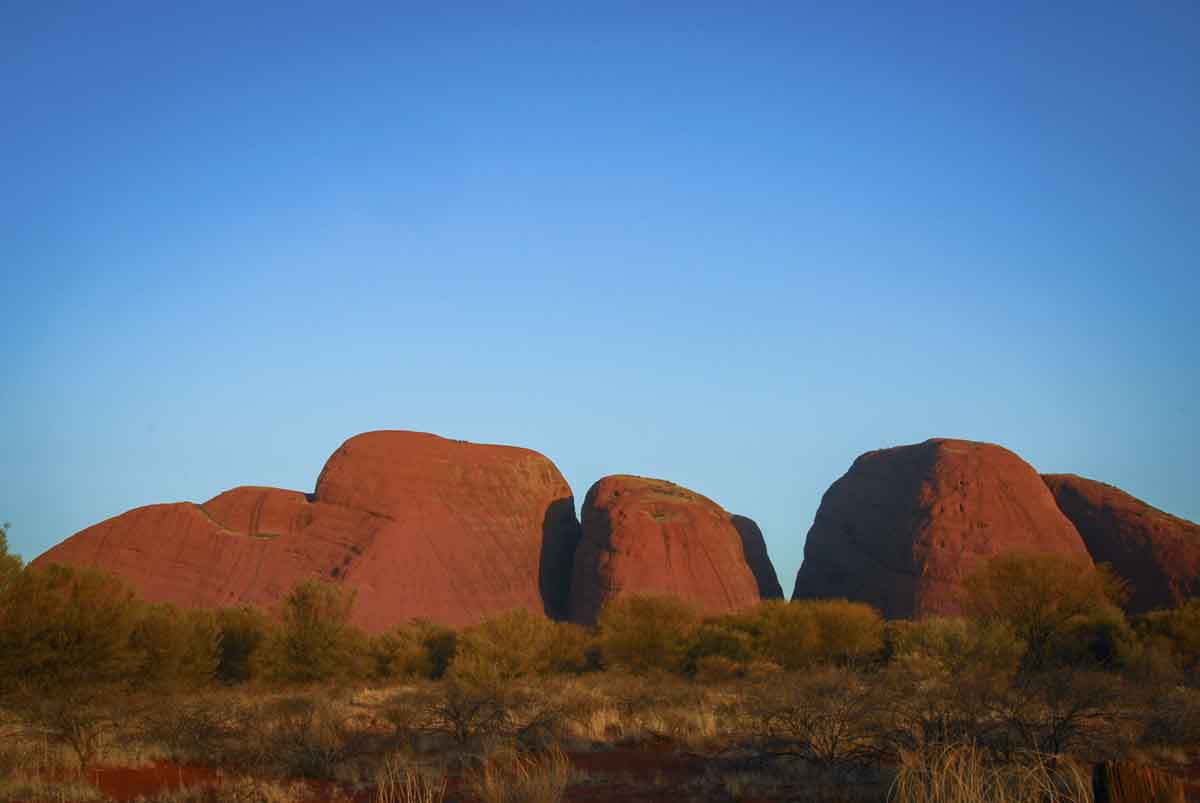
Watarrka National Park
Roughly halfway between Alice Springs and Uluru/Kata Tjuta you’ll find Watarrka National Park, comprising of over 1000 square kilometers of Australian bushland. The national park is diverse in terms of environments and landscapes, as it marks the meeting point of three different ecosystems – the MacDonnell Ranges, the dunes of the Simpson Desert, and the Western desert sandplains.
Watarrka National Park is paradise for landscape lovers. Towering sandstone cliffs plunge into the deep ochre earth of the Red Centre, surrounded by gorges and rock formations, home to over 600 species of plants and native animals.
By far and away, the best-known location in Watarrka National Park is Kings Canyon, a sandstone canyon with walls over 100 meters high – sometimes referred to as ‘Australia’s Grand Canyon‘. The canyon is sacred to the Luritja people, who currently use the site for a variety of ceremonies and customs.
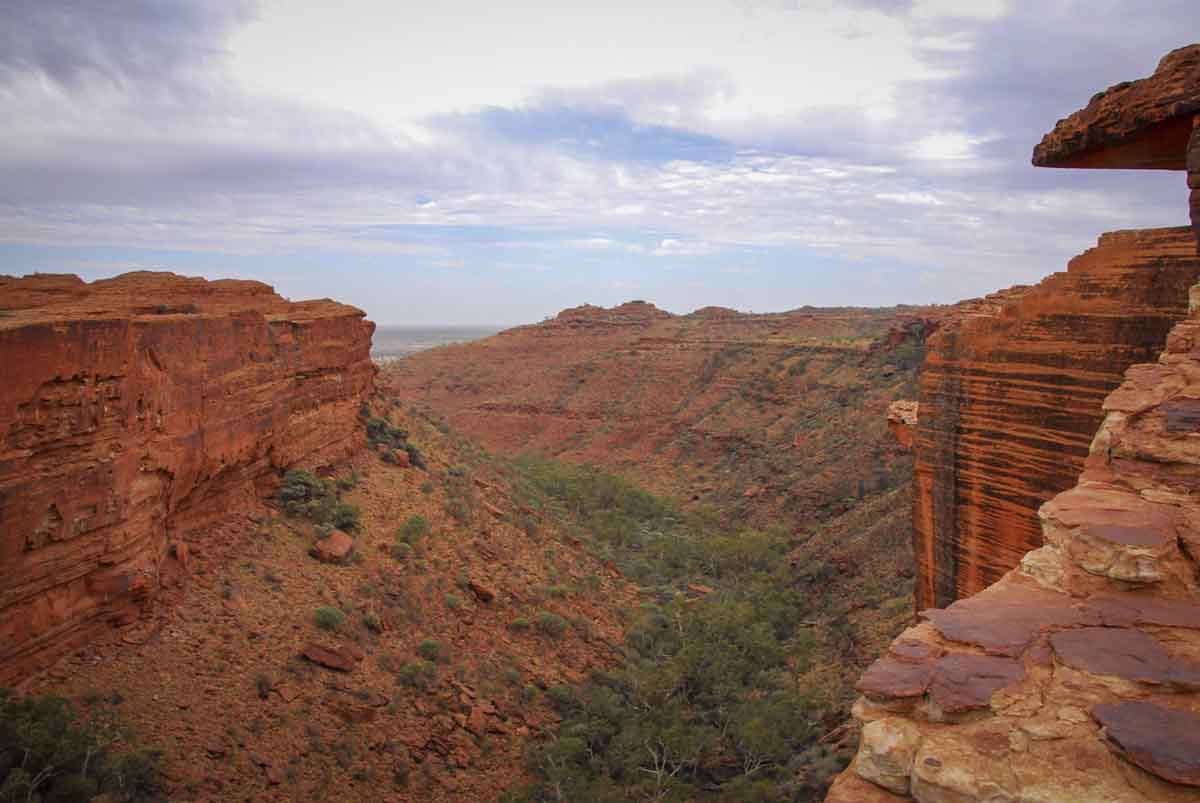
Visitors are allowed to walk along the trails, which provide a great introduction to this geological gem and scenic photo opportunities. The 6 km Rim Walk climbs to the edge of the canyon before tracing its rim, and then heads to the Garden of Eden, a permanent waterhole located at the centre of the canyon, surrounded by lush vegetation year-round. One of the highlights of this walk is the Lost City, an ensemble of weathered sandstone domes reminiscent of an abandoned city.
The Rim Walk takes approximately 3/4 hours – if this sounds like too much, shorter trails are available, like the Kings Creek Walk, a shady track leading you along the bottom of the canyon just 2 km return.

To learn more about Luritja heritage in the Watarrka area, you can join a tour with Karrke, owned and managed by an Aboriginal couple from a small community in Central Australia. Karrke organizes Aboriginal-led cultural experiences, including an overview of seasonal bush tucker food, medicinal plants, and an introduction to the art of dot painting.
This tours offer not only meaningful cultural experiences, they are also a way to support remote communities and allow them to continue living on Country, the place they called home for over 60,000 years.
How to Get to Watarrka
Watarrka National Park is about halfway between Uluru/Kata Tjuta and Alice Springs, and as such it offers the perfect intermediate spot for anyone road-tripping between these two destinations.
There are three roads to Watarrka – the Lasseter Highway and Luritja Road, suitable to all vehicles, and the Larapinta Drive through the West MacDonnell Ranges, only suitable to 4WD.
Please pay attention to wild animals when driving in remote areas of the Northern Territory – especially kangaroo and camel herds, especially active in the early morning and late afternoon.
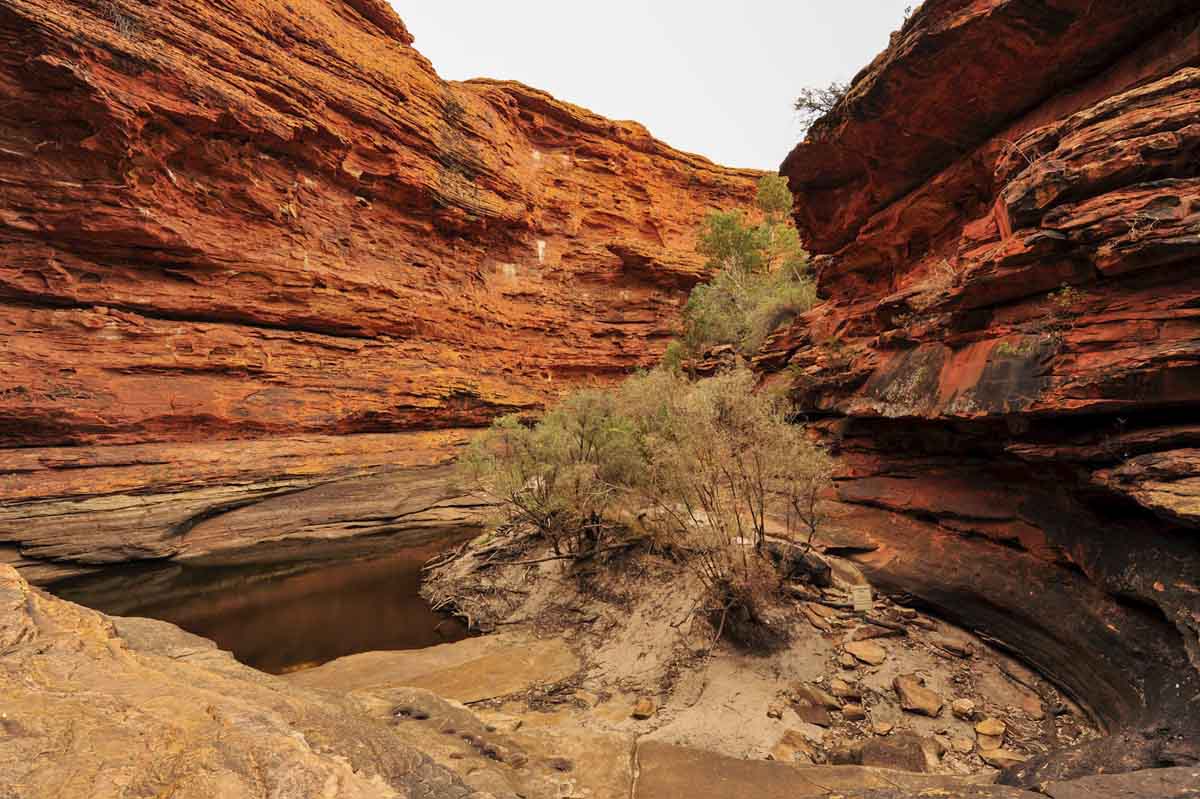
Where to Stay in Watarrka
There are two places to stay in the vicinity of Watarrka National Park – Kings Creek Station, offering bush tents, luxury double rooms, and glamping tents, and Kings Canyon Resort, with standard and deluxe rooms, two restaurants, and swimming pool.
Where to Eat in Watarrka
Both Kings Creek Station and Kings Canyon Resort offer dining options, so you’ll probably end up having your meals in your chosen accommodation.
Don’t miss the exclusive Under A Desert Moon dining experience organized by Kings Canyon Resort, featuring a 5-course dinner in a scenic desert location.
Travelling Australia for longer? Here’s our guide to the best things to do in Canberra and best day trips from Sydney!
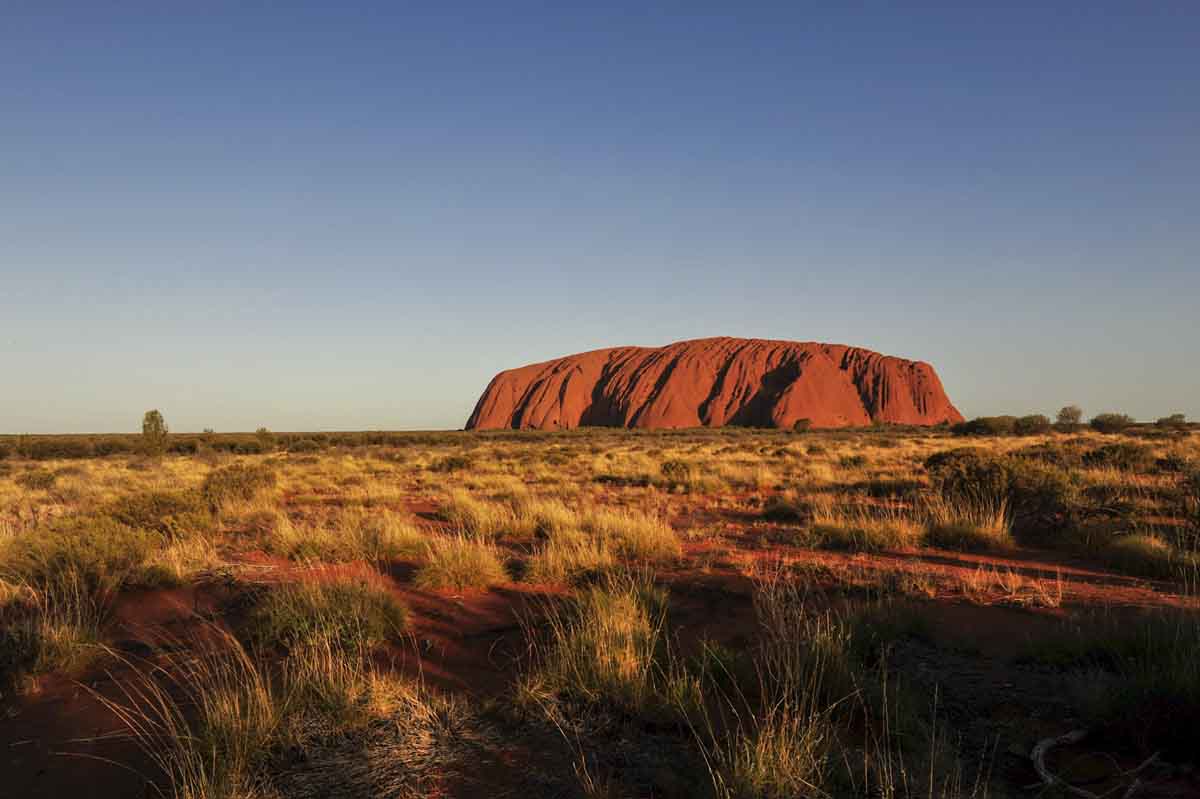
What’s New in the NT
In 2020, Uluru-Kata Tjuta National Park was named as one of Lonely Planet’s top three places to see in the world, alongside Petra and the Galapagos Islands. Uluru was praised for its attention to sustainability and ability to connect visitors with Aboriginal culture – check this link to know more!
Learning about Aboriginal culture will also be easier this year thanks to the new GPS-triggered audioguide available for rent at Uluru Segway Tours. It includes over 100 stories and facts about Uluru, allowing you to learn as you explore at your own pace.
Red Centre Top Travel Tip
Australia can get brutally hot, and the Red Centre is probably the hottest part of this sunburnt country. The extreme heat makes sightseeing and hiking difficult, so do yourself a favour and visit in the coolest months!
The best time to visit the Red Centre is between the months of May and September. Temperature ranges between 20 to 30°C, and rainfall is very rare. From October onwards, the temperature raises considerably and by December/January it regularly exceeds 40°C during the day. August and September are also the best months to see desert flowers in bloom.

If you can only visit in summer, plan most of your sightseeing around sunrise and sunset, the coolest and best time of day in terms of light! Most hotels and resorts have a swimming pool, so there’s always a way to cool off during those hot hours!
Another top tip for visitors to Uluru – did you know that you can also get around by bike? If you are short of time or prefer biking to hiking, rent a bike from Outback Cycling near the visitor centre and set off to explore a scenic 15 km loop around the rock, including some truly unusual viewpoints.
The Red Centre – Different In Every Sense
For most first-time visitors to Australia, the Red Centre is probably the first taste of ‘Australian Wilderness’. I visited during my third trip to Australia, but my first two visits were spent mainly on the East Coast – I had seen kangaroos hopping around, koalas and wombats at Taronga Zoo in Sydney, but that was about the end of my experiences with native Australian animals.
When we first set off driving south from Alice, bound to Uluru/Kata Tjuta, I couldn’t believe my eyes. We saw plenty of kangaroos along the road, and even randomly happened upon a huge herd of camels – by the way, did you know that Australia is home to the largest wild camel population in the world?
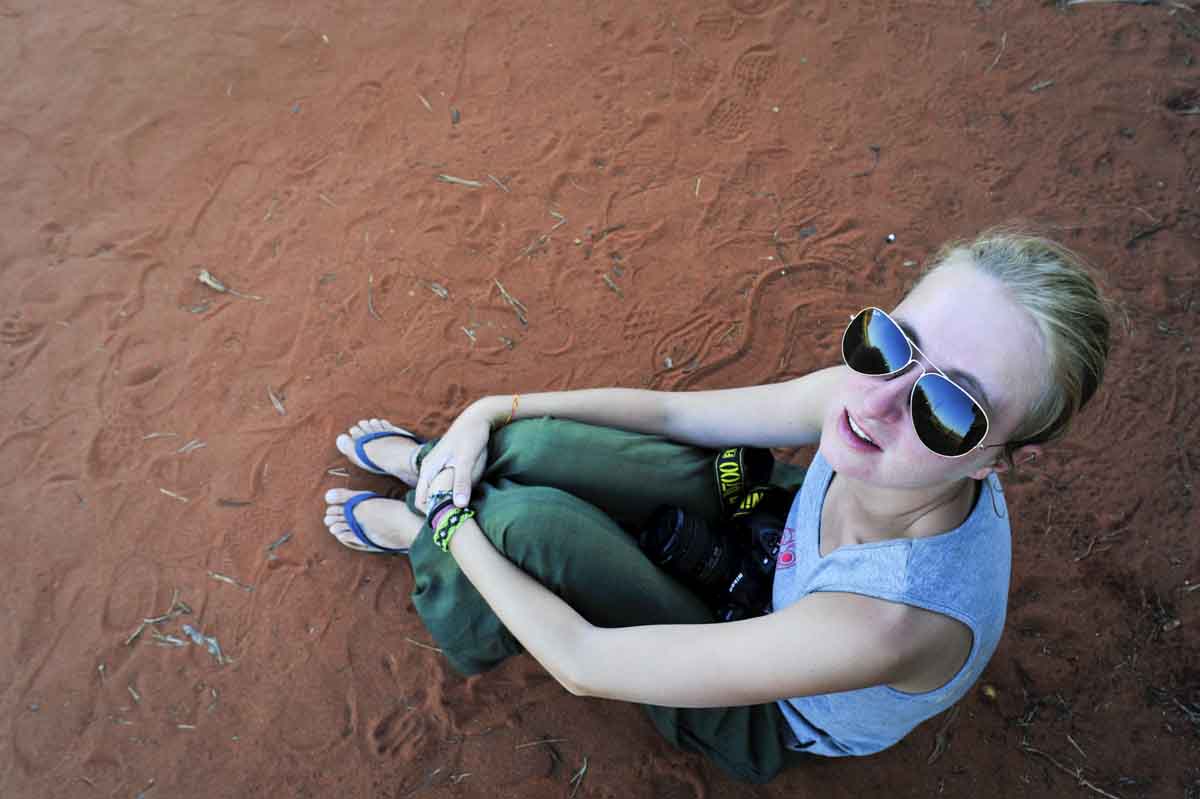
But my most memorable encounter with a native Australian animal happened during our first night camping at Ayers Rock Resort. I woke at night, and just as I was leaving my tent to use the toilet I saw something right in front of me. At first I thought it was a rabbit, but its face was pointier, and its ears were shaped like helicopter blades. What was it? I had never seen or heard of such an animal.
Was it maybe a new species I had just discovered? I just had to wake up my Australian-born husband to share the news with him. By then, the rabbit-like creature had hopped away. BTW, rabbits don’t hop? Or do they?
‘Nick, Nick, wake up! I just saw a funky rabbit!’
‘A funky-what?’ he replied, still groggy with sleep.
‘A funky rabbit! Like a regular rabbit but with a weird pointy face and helicopter ears!’
‘Ah, it must be a bilby or a bandicoot’ he replied, and rolled back to sleep.
The following day we asked around, and discovered that it was indeed a bilby, a small marsupial commonly seen in the area. My husband thought my description was hilarious, and twelve years later we still refer to bilbies as ‘funky rabbits’!
This guide was written as part of a 6 part series in collaboration with Tourism Northern Territory. Start planning a trip at https://northernterritory.
For inspiration follow @ntaustralia on IG and check out their Facebook page!
